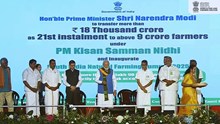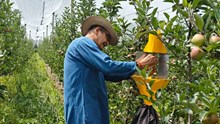
In the dry and arid regions of India, livestock farming plays a vital role in sustaining rural livelihoods. With erratic rainfall and poor soil fertility limiting crop production, animal husbandry often serves as the primary source of food security and income for many smallholder families. However, raising healthy and productive livestock in these harsh conditions presents significant challenges.
One of the biggest obstacles is the year-round scarcity of green fodder, which, combined with the high costs of commercial feed and the widespread use of traditional rearing practices, hampers both milk yield and weight gain in cattle, buffaloes, and goats. In regions like western Rajasthan, where small-scale farmers typically depend on agricultural residues and dry fodder, animals frequently suffer from nutritional deficiencies. This can lead to weakened immunity, slower growth in young stock, and reduced milk production in lactating animals.
To tackle these issues, scientists from the ICAR-Central Arid Zone Research Institute (CAZRI) in Jodhpur have teamed up with local farmers to develop and test practical, low-cost nutritional interventions. Among the most promising are multi-nutrient feed blocks (MNFB), multi-nutrient mixtures (MNM), and azolla supplementation—innovations designed to enhance livestock nutrition using resources that are accessible and affordable for rural communities.
Multi-Nutrient Feed Blocks (MNFB) for Cattle and Buffaloes
MNFBs are feed blocks that are compressed using locally accessible ingredients such as molasses, wheat bran, mustard oilcake, guar meal, salt, urea, and mineral mixtures. The blocks supply nutrition to dairy animals at an economical rate. In a field trial with 25 farmers in two villages (Popawas and Ghantiyala), MNFBs were supplied to lactating cows and buffaloes for 12 weeks.
One MNFB (2 kg) was given weekly to each animal. There was an increase in the average daily milk yield of buffaloes from 10.5 litres to 10.93 litres, and of cows from 8.17 litres to 8.77 litres. Thus, there was a rise of 4.1% in buffaloes and 7.4% in cows. Daily milk yield was recorded by the farmers and found to improve steadily. The economic analysis indicated that buffalo farmers made a profit with a benefit-cost (B:C) ratio of 3.16, while the cow farmers had a B:C ratio of 3.49. The results were clear enough to indicate that MNFBs were both practical and profitable.
Multi-Nutrient Mixture (MNM) for Goats
Goats primarily graze on the sparse vegetation found along roadsides and common lands in arid regions. Forage's nutritional value drastically declined during dry seasons. In order to solve this, ten nursing goats were used to test a unique mineral-vitamin mixture (MNM). Every day after grazing, 100 grams of MNM were given to each goat. The milk yield improved by 7.9% over a 12-week period, from 0.533 to 0.575 liters per day.
In addition to producing more milk, farmers observed that the goats were healthier overall, became more active, and grazed for longer periods of time. This intervention's B:C ratio was 2.66. Crucially, goats responded favorably to this mixture, in contrast to traditional mineral mixes that frequently have an unpleasant taste or odor.
Feeding Male Goat Kids for Better Body Weight
One of the biggest hurdles in dryland goat farming is the low selling price of young kids, which often happens due to their poor weight gain. Typically, farmers sell goat kids when they’re just 3 to 4 months old, and unfortunately, they tend to be underweight, leading to lower prices. To tackle this issue, a trial was conducted using MNM on 3-month-old male goat kids for a period of 60 days. In total, 125 kids from 25 farmers participated in the study.
Each kid was given 150 grams of MNM daily, and the results were impressive: the average body weight increased by 5.3 kg per kid over those two months. The sale price for the treated kids reached Rs. 6,400, while the non-treated ones only fetched Rs. 5,350. After accounting for the MNM cost of Rs. 270 per kid, farmers saw an additional profit of Rs. 780 per animal. This straightforward feeding method turned out to be a game-changer, significantly boosting returns for small livestock keepers.
Why These Interventions Work
These cost-effective feed technologies address three critical problems of farmers in arid ecosystems. They provide a solution to the scarcity of green fodder by substituting it with energy- and protein-rich alternatives such as molasses and oil cakes. They correct mineral and vitamin deficiencies characteristic of dryland grazing systems through the incorporation of balanced mineral blends. They are also affordable and can be produced in the village by using local materials, thus being within reach even for small and marginal farmers.
No costly machinery is required, and the farmers need not modify their conventional animal breeding practices. These supplements easily accommodate in their regular routine, with maximum gain for minimum effort.
Way Forward
These experiments clearly indicate how low-cost, farmer-friendly nutrition practices can considerably enhance the productivity of animals in dry environments. Interventions such as MNFB and MNM are simple to introduce, locally produced, and do not demand huge investments. In addition to enhanced feeding, farmers need to be encouraged to adopt improved healthcare, selection of breeding stock, and scientific livestock management training.
Farmers involved in these initiatives have experienced both milk yields and earnings. With increased awareness and wider scale-up, these affordable measures have the potential to bring significant improvements to rural livelihoods in India's arid and semi-arid regions.
















